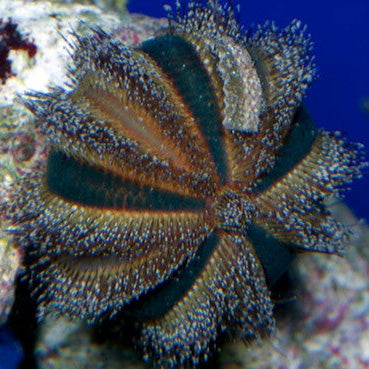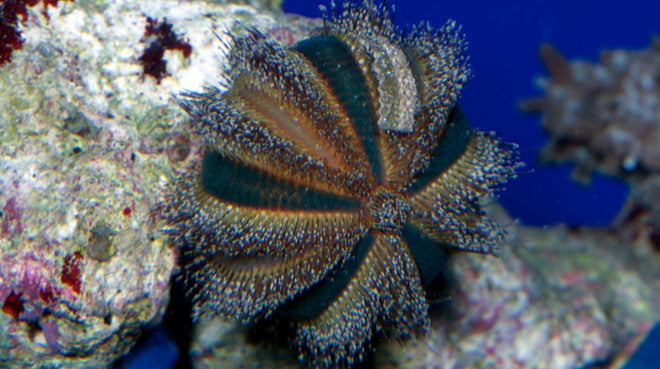Free Shipping Over $249. Or $29.99 Flat Rate Over $100
Blue Tuxedo Urchin
$ 44.99
Please select all options.
How to Care for Blue Tuxedo Urchin
written by Dave Burr
The Blue Tuxedo Urchin is especially useful in reef aquariums because it will eat unsightly Green Hair Algae. At the same time it is one of the more attractive urchins.
Behavior:
The Blue Tuxedo Urchin is nocturnal and spends the night grazing while fish sleep. It will not hurt corals or invertebrates. Blue Tuxedo Sea Urchins will pick up bits of substrate, loose mushrooms or polyps, or scraps of algae and camouflage itself with them. This is a sign that it is happy and healthy.
Feeding:
If no algae is present in the aquarium you may supplement the Blue Tuxedo Urchin's diet with live macro algae and dried seaweed (nori).
Tip: Don't forget about your water parameters when combating algae blooms. Water chemistry is every bit as important as a good clean-up crew.
Facts about Blue Tuxedo Sea Urchins:
Care Level: Easy
Reef Compatible: Yes
Diet: Herbivore
Range: Indo-Pacific
Family: Temnopleuridae
Water Conditions: 75-80° F; sg 1.024-1.026 (1.025 is ideal); pH 8.1-8.4 Ca 420-440 ppm, Alk 8-9.5 dKH, Mg 1260-1350, Nitrates <10ppm, Phosphates < .10ppm
Water Chemistry:
It is important that proper calcium (420-440 ppm), alkalinity (8-9.5 dkh - run it 7-8 if you are carbon dosing) , and magnesium levels (1260-1350 ppm) are maintained. Raising magnesium levels gradually up to 1400-1600 ppm can help to combat algae outbreaks, just keep CA and Alk in line as you raise the Mg. Nitrates should be below 10 ppm and phosphates should be below .10 ppm. We recommend doing a water change when Nitrate levels rise to 10 ppm. It is important to replace your phosphate media when phosphates rise to .10 ppm. Media Reactors make the most efficient use of your phosphate media by fluidizing it.
Dosing:
Vivid Aquariums uses and recommends dosing pumps to automate the dosing of additives and keep your levels more constant. A dosing pump can alleviate the chore of manually dosing your aquarium with Ca, Alk, & Mg 2,3, or 4 times per week and will benefit your aquarium by keeping your levels constant through frequent small additions of Ca, Alk, & Mg. Our tanks all progressed when we switched from 3 manual dosings per week to 70 automatic dosings per week and we got a lot more work done.
Category: 25-50, Clean Up Crew, easy, herbivore, mespilia-globulus, Urchin
Type: Invert



